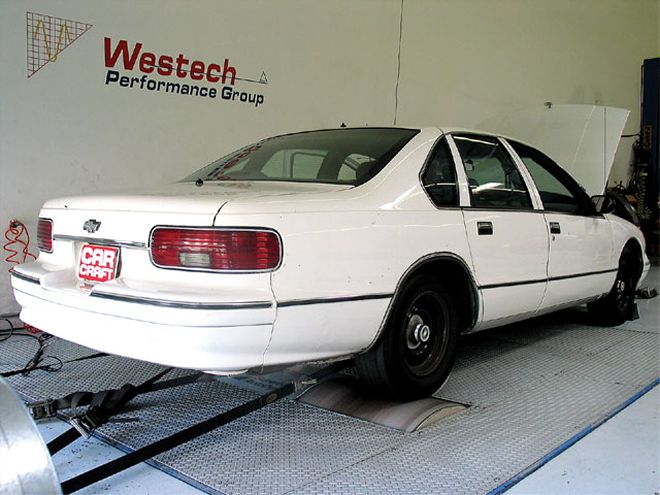

Some months ago we introduced you to our in-house '96 Chevy Caprice 9C1, better known as a cop car. This specimen of the last fullsize rear wheel drive Chevy is equipped with the vaunted Gen II LT1 engine, displacing 5.7 liters and rated at 260 hp with iron cylinder heads. Our interest in the car was primarily as an urban commuter, battling its way through the mean streets of LA while providing a degree of comfort and utility, along with their well-known durability. We selected an LT1 Caprice specifically because of the impressive performance these cars deliver, and since mechanically the 9C1 is nearly identical to the Impala SS of the same era, aftermarket support is available to make it even better.
The time lapse between our introduction of the car and now was due primarily to an extended "shakedown" period, which shook out a steady stream of maladies. Since our car had 175,000 miles when purchased (the engine was replaced with a GM service long-block at 106,000, as was the trans), niggling problems like leaky coolant hoses, burned-out fan relays, and fried ignition parts are expected. But now that the car has provided about 10,000 miles of relatively trouble-free motoring, it's time to turn up the heat.
For the initial thrashing, we strapped our retiree to the Superflow chassis dyno at Westech Performance Group in Mira Loma, California. Rather than throwing a pile of go-fast parts at the high-mileage cruiser, we opted instead for simple tweaks to monitor the car's reaction to ensure the old enforcer is up to the task. If the car responds favorably to the basics, we'll take it as an indication that it's safe to venture on to more serious hardware.
Injector DetectorOne of the latest additions to the ever-expanding arsenal of automotive test equipment at Westech Performance Group is the ASNU fuel-injector analyzer. The ASNU rig is intended to provide automotive service centers a means of determining the performance of each injector, allowing technicians to pinpoint defective components by testing them individually under a number of conditions. The rig can test up to eight injectors at a time and provides the ability to vary fuel pressure and injector pulse width, meanwhile allowing the technician to visually observe the injector's spray pattern and compare delivery rates between the injectors in a set. Injectors can be tested for static performance (held open) or dynamic performance (pulsed). There are also programs to simulate typical driving operation, and the rig is capable of simulating engine operation up to 10,000 rpm if so desired. Once the injectors have been tested, the ASNU can also be used to clean them using its patented ultrasonic treatment process. As the name implies, most used injectors can be returned to "as-new" performance using this apparatus.
Although the ASNU was developed for service work, it is obviously an excellent tool for performance tuning and diagnostic work. Our Caprice had fairly new injectors, so we observed a set of Mustang injectors going through the process.